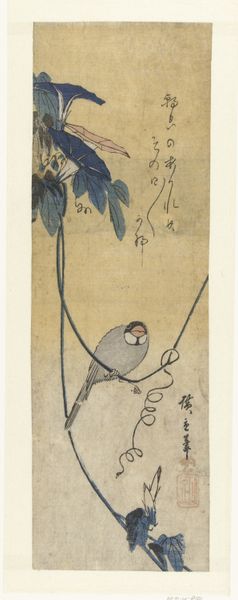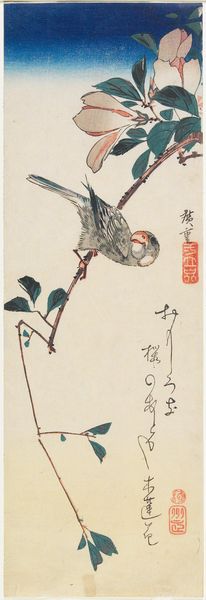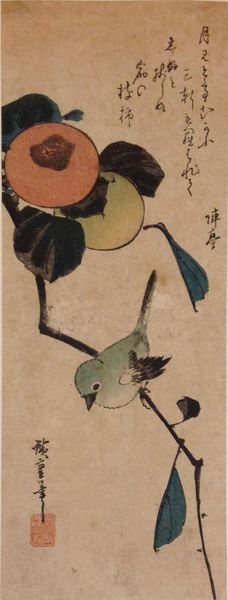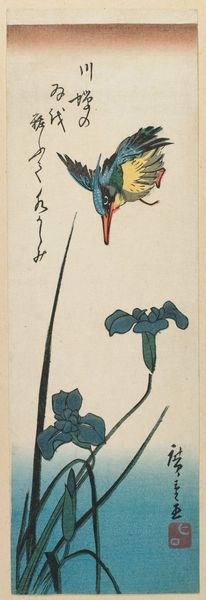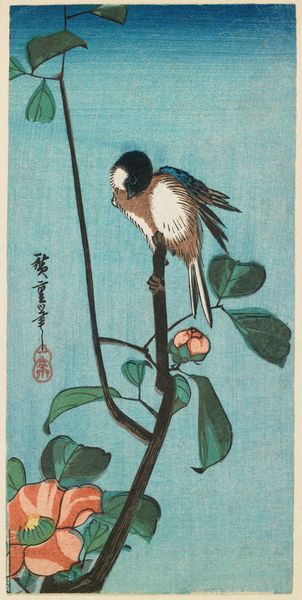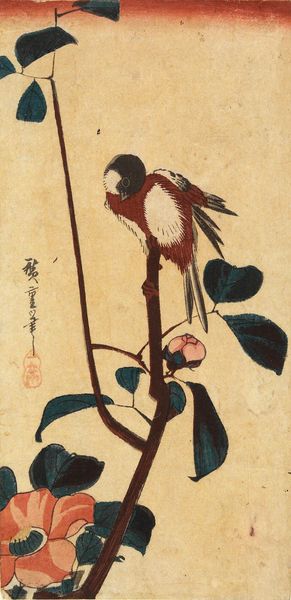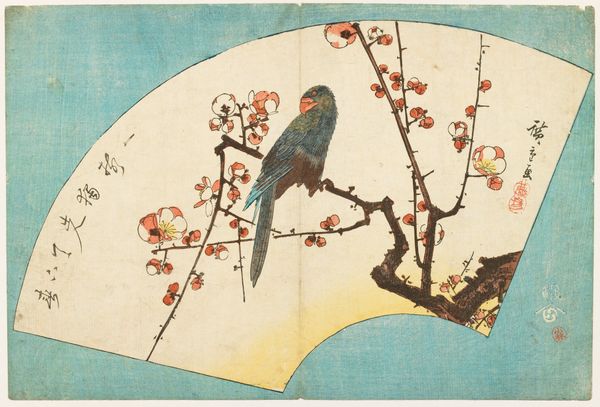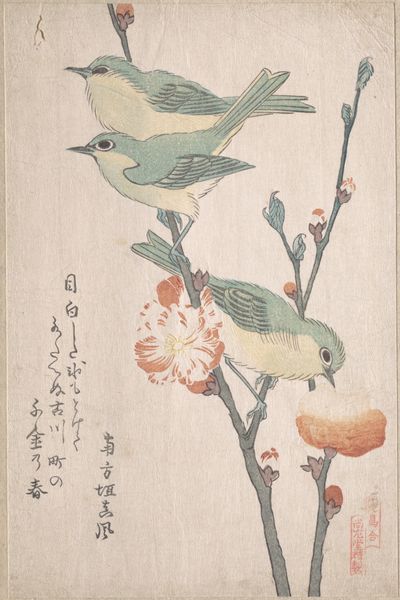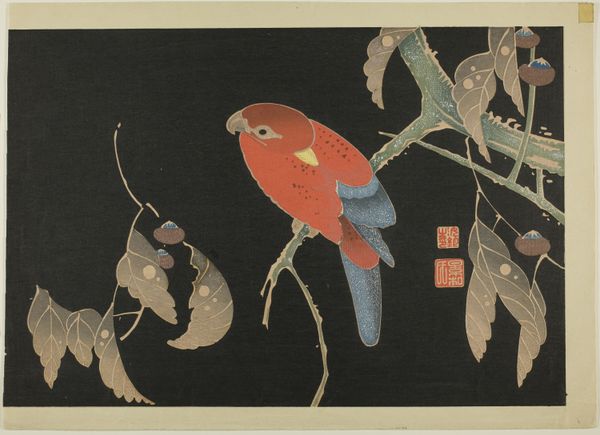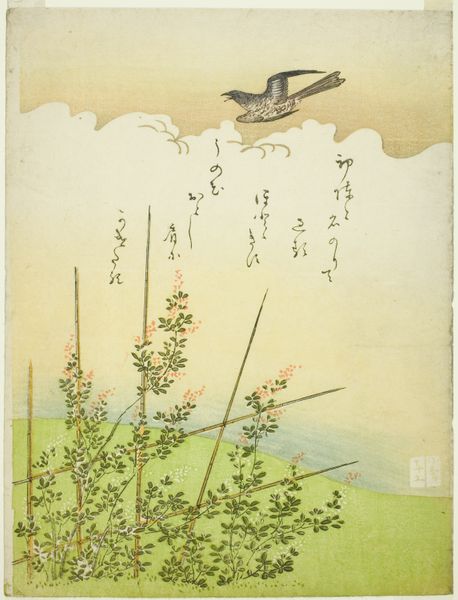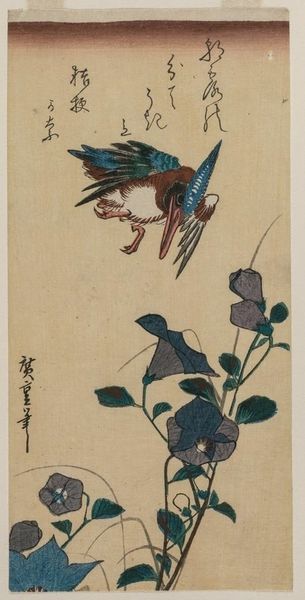
print, paper, ink
#
blue ink drawing
# print
#
asian-art
#
landscape
#
ukiyo-e
#
japan
#
figuration
#
paper
#
ink
#
line
#
watercolour illustration
#
watercolor
Dimensions: 13 7/16 × 4 1/2 in. (34.2 × 11.5 cm) (image, sheet, aitanzaku)
Copyright: Public Domain
This woodblock print of morning glories and a finch was created by Utagawa Hiroshige in 19th century Japan. The delicate morning glory flowers, unfurling towards the heavens, suggest ephemeral beauty, each bloom a fleeting moment. Similarly, the finch, perched precariously on a slender vine, embodies fragility, as birds often do in art of the period. The vine itself becomes a symbol of connection. We can see visual echoes of the twining vine as a motif in ancient Roman art, where winding grapevines were associated with Bacchus, the god of wine, ecstasy, and transformation. Consider how this ancient symbol was repurposed during the Renaissance. It can be found in countless paintings adorning the edges of tapestries, as a way to add a touch of classical elegance. Here, the vine has been stripped down to a few essential lines. Yet its transformative quality remains, suggesting a link between the earthly realm and the spiritual one. This powerful image, steeped in cultural memory, touches our subconscious, reminding us of the interconnectedness of all things.
Comments
minneapolisinstituteofart about 2 years ago
⋮
Part of the fascination for flowers among the Japanese during the Edo period (1600-1868) was their newly developed expertise in cultivating hybrid varieties. They created many new strains of morning glories in the 19th century, and publishers were quick to release books illustrating their exotic colors and blossom shapes. The poem that Hiroshige included with this print suggests this proliferation: The morning glories blossom with the sun__with the sun.
Join the conversation
Join millions of artists and users on Artera today and experience the ultimate creative platform.
